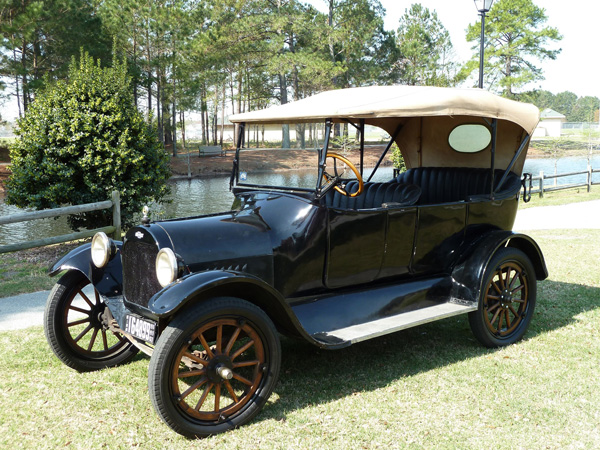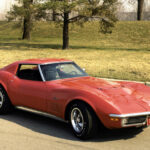
1919 Chevrolet FB-4
The Chevrolet FB-4 became the car which eventually unseated the Ford Model T from its
proud position as the world’s best-selling car. Introduced in 1919 it took only eight years
for this four-cylinder Chevrolet to achieve top-selling status as it more suited the needs of
the American motorist.
After the First World War roads were progressively improved and many well-to-do
Americans thought the Ford Model T car, which had earned the nickname `tin lizzie’, a little
too crude to be seen driving. With the FB4, Chevrolet set a new standard and since that
time Chevrolet has remained America’s biggest-selling marque.
The FB-4 had an overhead-valve 3.6-litre four-cylinder engine mounted at the front on a
two-railed chassis with a conventional engine and transmission arrangement. This engine
was much more efficient than the side-valve unit used in the Model T since the overhead
layout made for a more efficient combustion chamber.
When it came to handling, the Chevrolet sat lower than the Ford – not a lot lower as there
were still plenty of bad roads around, but sufficiently low enough to lower the centre of
gravity. The more conventional leaf-spring suspension behaved better in high-speed
driving than Ford’s transverse-spring arrangement. On the other hand, the brakes, at least
to begin with, were still on the back wheels only and the wheels remained wooden-spoked.
Since the Chevy’s OHV engine was much taller than the squat Model T engine, the higher
bonnet blended into the car’s natural waistline in a more attractive manner and gave the
Chevrolet a more modern appearance.
Over time progressive improvements were made. One of Chevrolet’s companion
companies in General Motors was Cadillac and they had introduced electric starter motors
and full electric lighting as early as 1916. After its adoption it was not long before other
major conveniences, such as mechanical windscreen wipers, were also introduced.
Through the 1920s, the major American companies for the most part ignored technical
revolutions like independent suspension and unitary body construction, but their research
into fuel quality and combustion gave us the modern coil ignition system, perfected for
General Motors by Charles Kettering.
Their search for better all-round performance also quickly led to the widespread use of the
V8 engine, although after the launch of the FB-4 and its companion models, Chevrolet
built nothing but four-cylinder cars until 1929.









